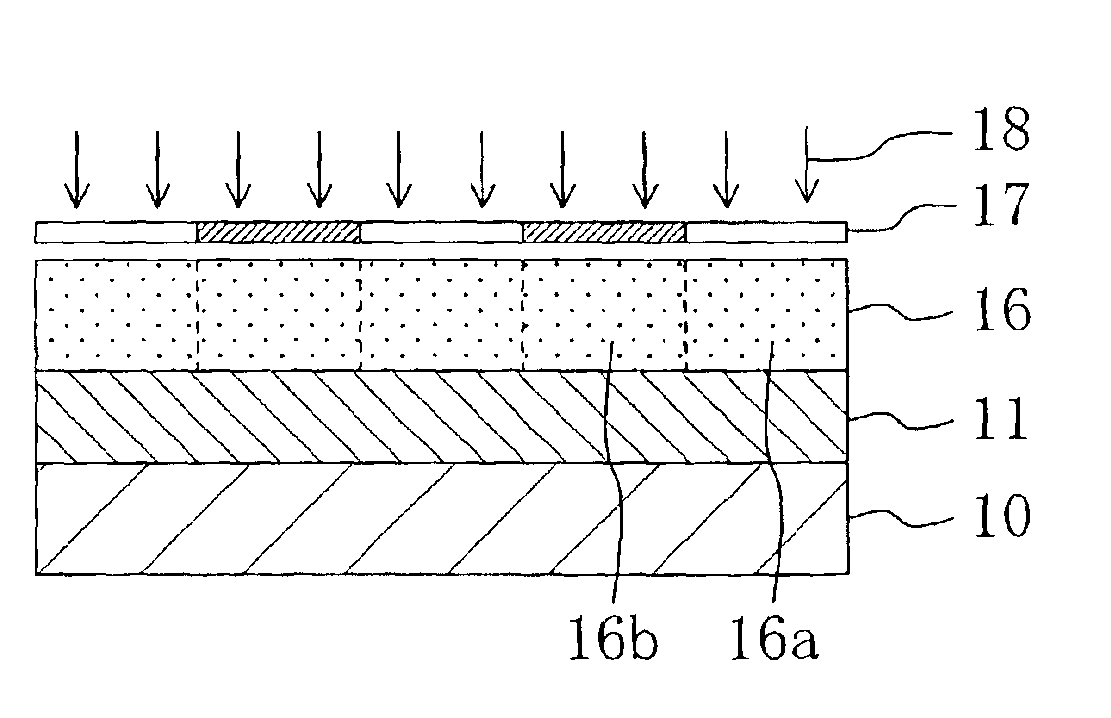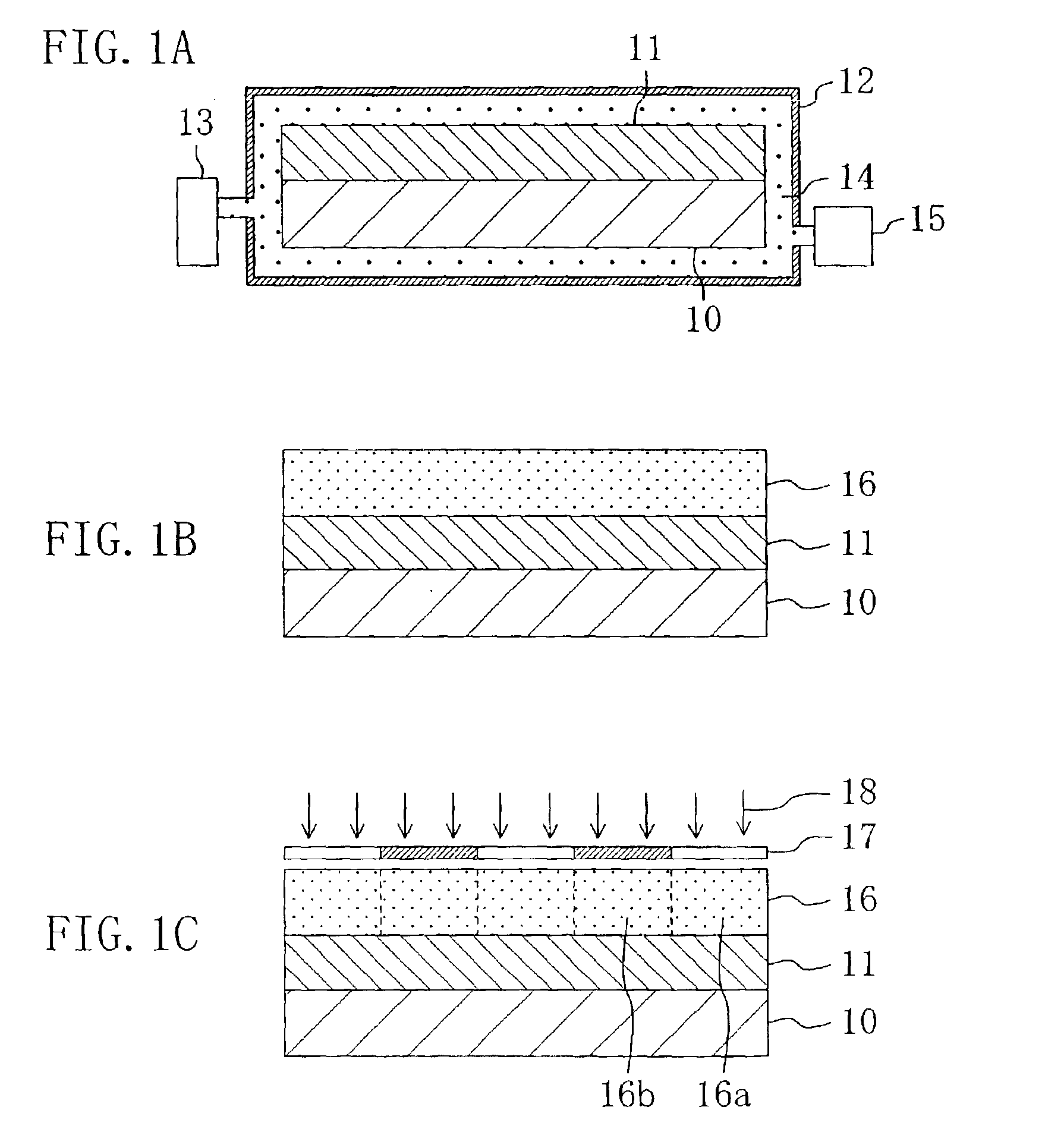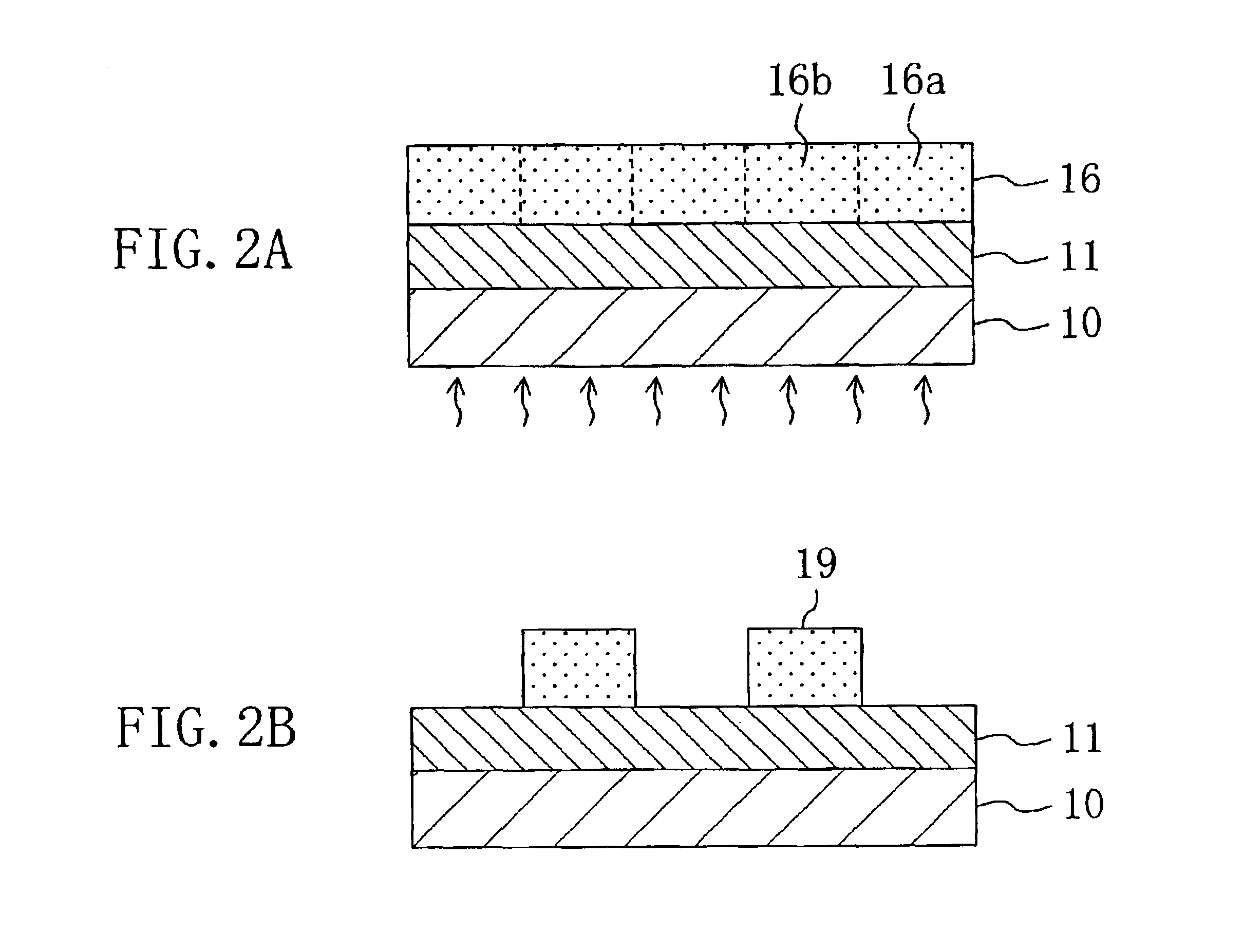Pattern formation method
- Summary
- Abstract
- Description
- Claims
- Application Information
AI Technical Summary
Benefits of technology
Problems solved by technology
Method used
Image
Examples
embodiment 1
Modification of Embodiment 1
[0059]A pattern formation method according to a modification of Embodiment 1 will now be described. This modification is different from Embodiment 1 in the chemically amplified resist material alone, and hence, the chemically amplified resist material alone will be herein described. Specifically, the chemically amplified resist material used in the modification has the following composition:
[0060]
Base polymer: poly((2-methyl-2-adamantyl acrylate) − 2 g(γ-butyrolactone methacrylate)) (wherein 2-methyl-2-adamantylacrylate:γ-butyrolactone methacrylate = 70 mol %:30 mol %)Acid generator: naphthaleneimino tosylate0.04 gSolvent: propylene glycol monomethyl ether acetate 20 g
[0061]In this chemically amplified resist material, the base polymer has an adamantyl group as an acid labile group of an ester group. Instead, the base polymer may have a t-butyl group or a t-butyloxycarbonyl group.
[0062]Also, in the chemically amplified resist material, naphthaleneimino ...
embodiment 2
[0064]A pattern formation method according to Embodiment 2 of the invention will now be described with reference to FIGS. 3A through 3C, 4A and 4B.
[0065]First, siloxane doped with carbon atoms (with a dielectric constant of 2.5) is deposited on a substrate 20, so as to form a low dielectric insulating film 21 corresponding to an underlying film to be treated. Thus, the low dielectric insulating film 21 is made of carbon-containing siloxane, and therefore, the low dielectric insulating film 21 has a rough surface.
[0066]Then, the low dielectric insulating film 21 is placed in a chamber 22. Thereafter, the low dielectric insulating film 21 is subjected to a surface flattening treatment with a supercritical fluid 23 of carbon dioxide (CO2) (which is placed in a subcritical state by being kept at a temperature of 20° C. and at 80 atmospheric pressure) for 30 minutes.
[0067]In this manner, in the chamber 22, a material of recesses of the rough surface of the low dielectric insulating film ...
PUM
 Login to View More
Login to View More Abstract
Description
Claims
Application Information
 Login to View More
Login to View More - R&D
- Intellectual Property
- Life Sciences
- Materials
- Tech Scout
- Unparalleled Data Quality
- Higher Quality Content
- 60% Fewer Hallucinations
Browse by: Latest US Patents, China's latest patents, Technical Efficacy Thesaurus, Application Domain, Technology Topic, Popular Technical Reports.
© 2025 PatSnap. All rights reserved.Legal|Privacy policy|Modern Slavery Act Transparency Statement|Sitemap|About US| Contact US: help@patsnap.com



